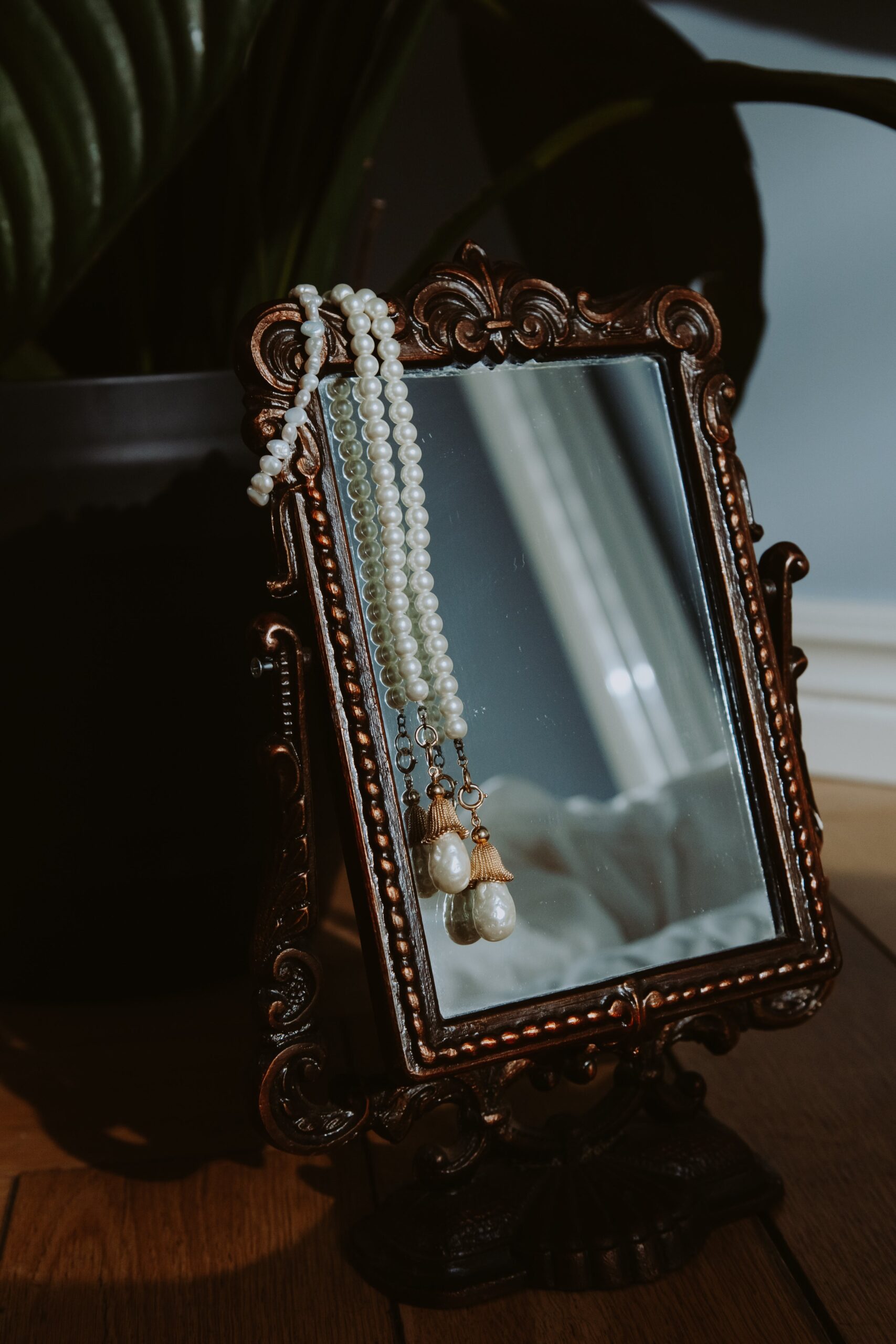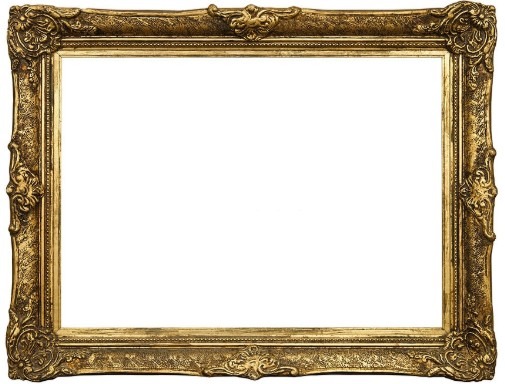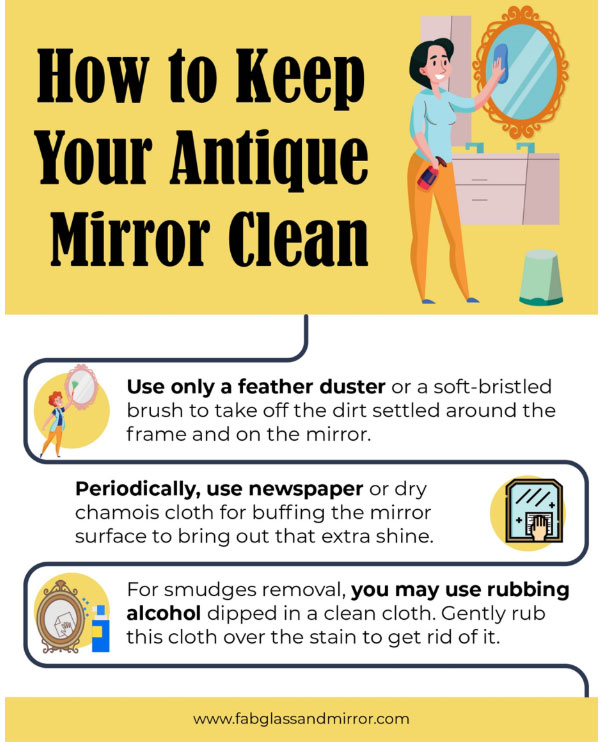History
For the majority of history, only the very affluent could purchase a looking glass big enough to show their full body; everyone else had to make due with only being able to see a small piece of themselves in a mirror. This was particularly true in the 15th century, when the Venetian mirror was invented. The mirrors were painstakingly created using a top-secret method on the tiny Italian island of Murano near Venice. This technique involved glass makers embedding gold leaf into the glass, giving the mirrors the ethereal appearance of gold dust. Gold leaf was applied to the mirror to give glitter while being permanently protected by the glass.
The mirrored glass was then fastened into priceless frames with beveled glass edges using metal screws. Venetian mirrors dominated the market and essentially eliminated the competition, despite being pricey and only available from Italy.
Mirror producers moved to using tin foil and liquid mercury to give the glass a mirror finish from the 16th to the early 20th centuries. As they age, both the Venetian mirrors and the tin and mercury mirrors take on a crystalline aspect. Together with varying glass thickness and waviness, bubbles and other imperfections in antique mirror glass can be used to identify an item as an antique.
When Justus von Liebig created a method to chemically apply a thin layer of metallic silver directly onto the glass in 1835, he revolutionized mirrors and made them more cheap. The mirror silvering technique is still in use today.
How will you know if a mirror is antique
1. Age – The age of the mirror should be thought about initially. The average age of an antique mirror is at least 100 years, though some may be much older. Knowing the mirror’s age can help you establish whether or not it is an antique.
2. Glass quality – In comparison to contemporary glass, the glass in antique mirrors is frequently thinner and more distorted, with minute bubbles, waves, or other flaws. If you can spot any of these qualities, pay special attention to the glass.
3. Frame – Decorative frames constructed of wood, metal, or other materials are frequently found on antique mirrors. The frame could be gilded or have an aging texture. The design of the frame might also reveal information about the mirror’s age.
4. Backing – An antique mirror’s backing can reveal information about its age. Earlier mirrors had metal backings, but later ones had paper or cardboard backings. It can be an indicator that the mirror is old if the backing is made of metal or bronze.
5. Condition – The mirror’s condition can give information about its age. It can be an indicator that the glass is ancient if it exhibits scuffs, chips, or other wear-and-tear. On the other hand, if the glass is flawless, it can be a replica.
6. Origin – Think about where the mirror came from. A number of nations, including France and Italy, have a long tradition of producing antique mirrors. It can be a good sign that a mirror is antique if its origin can be tracked back to a certain period and location.
Types of Antique Mirrors
Handheld Mirrors
The market is filled with a wide variety of antique mirrors. Antique hand mirrors are among the most popular. The earliest handheld, only a few inches in diameter metal-backed mirrors were produced in Lebanon and Rome. Handheld mirrors got bigger as people learned how to produce bigger glass panes. Due to limitations in glass manufacturing, standing mirrors, which allow you to see your entire body, did not become popular until the 1700s. Originally, these full-length mirrors stood alone.
Cheval Mirrors
The Parisian cheval mirrors are among the most well-liked standing full-length mirrors. The four feet that identify cheval mirrors are the source of the term “cheval,” which is French for “horse.” They frequently have a swivel and are normally supported by two posts on either side of the mirror. These framed mirrors, which are often spherical and adorned with natural designs, are true to the Rococo aesthetic. Its frames come in a variety of designs, from elaborate and detailed to simple and organic. Most antique cheval mirrors cost a few thousand dollars or more.
Even though you might not have time to go digging through the antique shops and vintage stores in pursuit of ancient mirrors artefacts, these timeless rustic pieces can still be part of your homes and adorn your walls. Several reputed companies are manufacturing antique mirrored look modern reflective glasses, which are processed with acid to generate that trademark vintage appeal. Available in unique forms and dimensions, these evergreen pieces of art can be painted, sand-smoothed, or left with a lustrous polished finish.
As you might have already figured it by now, procuring an Antique mirror is not much of a task: However, that is not all about it. You’ll have to decide the type of mirror that will look best, and at what place, upkeep routine, and much more. So while buying an Antique glass mirror, here are the top 4 things that you need to keep under close consideration to make the most out of your regal possession.
Where can a framed antique mirror be used?
There’s plenty of areas in your home where you may consider putting a decorative mirror
- The living-room is one of the most obvious choices. A large antique mirror adorning a wall with a comprehensive framework may look as elegant as an intricate artwork.
- Other areas include the corridor at the end of the wall, in the office, along the staircase and the entrance.
- You may also install a vintage mirror on the patio outside, or a wall next to the garden. Those with restricted garden space, the latter is a particularly good option. The mirror creates an illusion of the flowers and bushes growing beyond than where they actually are, making the surroundings appear more vast and spacious.
The trick to pulling off eye-catching decor with an Antique mirror is appropriate positioning and understanding how to mix and match. Be sure that the mirror is placed in a way that it reflects light that falls adequately. After all, it’s the reflective element that coaxes out its elegance to the fullest.
Which type of frame is best suited to an antique mirror?
Antique mirrors are often associated with rustic glazing or metallic tints that make these glass reflectors look as if they have aged with time. They usually look best with intricately carved frames, darkened edges, and faded patches. Placing an antique glass mirror to a room is the simplest to add a vintage vibe to it. The stylish and detailed framing give character to an otherwise dull space. When flanked by a pair of lamps, these reflective artifacts can quickly become the focal point of the wall they are mounted on. Incredibly regal and traditional in their appearance, Antique mirrors flanked by elaborate and detailed framing are a perfect addition to the French-styled or aristocratic homes.
On the contrary, if you are not much of a fan of the highly ornate framework around a mirror, you have an option to go with the bevelled edged glass reflectors that look particularly graceful in the homes rich with modern decor. Our next section will elaborate on it more.
Bevelled and polished edge antique mirrors
Bevelled wall mirrors refer to the form of mirrors whose corners are sliced at some angle to give a mirror an appearance of a frame surrounding it. The edge offers these glass reflectors a dramatized and yet subtle presentation that further distinguishes the framework, thus imparting a polished look that ordinary mirrors usually do not exude.
A skilled craftsman makes use of a glass-bevelling device to grind and polish the mirror edges to give them an angular appearance. The slant scale on edge typically varies between 0.6 cm – 2.55 cm thickness. The exact measurements are determined by the mirror structure, and by professionals bevelling the glass.
Bevelled and polished edges, antique mirrors are also quite popular amongst the connoisseurs of vintage artifacts. Such minimalistic and yet uber regal-looking reflective glasses are widely preferred in contemporary households. You could hang them in your living rooms, over the hearth, or even in the bedroom to add character to otherwise drab settings— without going overboard.
How to keep antique mirrors look clean?
An Antique mirror gives your household a tinge of retro charm. However, framework — particularly those with filigree work or other embellishments — may become dusty, and the mirror surface can get stained over time. Here are a few steps that you can undertake to ensure its upkeep, albeit gently.
- Use only a feather duster or a soft-bristled brush to take off the dirt settled around the frame and on the mirror top.
- For hard smudge removal, you may use rubbing alcohol dipped in a clean chamois cloth. Gently rub this cloth over the stain to get rid of it. Also, instead of rubbing alcohol, you can use a solution of water and white vinegar in a 4:1 ratio.
- Periodically, use newspaper or dry chamois cloth for buffing the mirror surface to bring out that extra sheen.
Conclusion
When using antique mirror glass, there are a few vital things to keep in mind. It may be a lovely accent to any room. Consider the size, form, frame, illumination, and authenticity of the antique mirror as well as its age and condition when choosing one.



